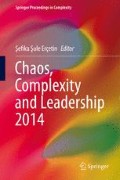Abstract
Today the concept of distance education is fairly well understood and the potential importance of it towards the future of education is also generally acknowledged. With advances in multimedia and communication technologies, Turkish corporations as well as Turkish universities or other Turkish education institutes are adopting distance education frequently. It is understood that the support of the traditional face-to-face approaches of education in higher education institutions continues alongside with an expansion of lifelong learning opportunities. Distance education centers have to face barriers in Turkey such as a lack of staff training in course development and technology, a lack of support for distance learning in general and inadequate faculty selection for distance learning courses. Distance education has faced several challenges in implementation during its decades in history as well. First, distance education provision constitutes a very small section of higher education provision within the federal education system. Second, many Turkish universities and its lecturers seem to be encumbered by existing rules and traditions, which they do not want to break. Third, it appears that the main motivation for offering the variants of distance education described above is financial. Another fact is the bureaucracy that distance learning has to face, before it goes on track. The suggested barriers and challenges highlighted above may suit to the Turkish education sector commonly and lecturers must be aware of them if they would like to use virtual learning environments.
Access this chapter
Tax calculation will be finalised at checkout
Purchases are for personal use only
References
Aghenta JA (1993) Principals and practices of educational planning: focus on the developing countries. NSEP, Benin-City
Galusha J (1998) Barriers to learning in distance education. University of Mississippi. http://www.nottingham.ac.uk/~ntzcl1/literature/barriers/galusha.rtf. Retrieved 2 February 2015
Gosper M, Malfroy J, McKenzie J (2013) Students’ experiences and expectations of technologies: an Australian study designed to inform planning and development decisions. Aust J Educ Technol 29(2):268
Hertsch F (2012) Multi-media enrichment for foreign language teaching. Procedia - Soc Behav Sci 70(25):615–621
Knight S (2011) Emerging practice in a digital age. University of Bristol. http://www.jisc.ac.uk/media/documents/programmes/elearning/digiemerge/emerginpracticeword.doc. Retrieved 2 February 2015
Meacham D, Evans D (1989) Distance education: the design of study materials. Open Learning Institute, Charles Stuart University, Wagga Wagga, Australia
Moodle.Net: registered moodle sites. Internet: https://moodle.net/sites/index.php?country=TR. Retrieved 2 February 2015
Nakpodia ED (2010) Management of distance education in the development of Nigeria’s education. Internet: http://www.krepublishers.com/02-Journals/JSS/JSS-23-0-000-10-Web/JSS-23-1-000-10-Abst-PDF/JSS-23-1-045-10-919-Nakpodia-E-D/JSS-23-1-045-10-919-Nakpodia-E-D-Tt.pdf. Retrieved 2 February 2015
Neumann T, Logan K (2010) Comparison of blackboard 9.1 and moodle 2.0 (2010). University of London. Internet: http://www.lkl.ac.uk/ltu/files/publications/Comparison_Bb9-Mdl2_Aug2010.pdf. Retrieved 2 February 2015
Oaks M (1996) Western cooperative for educational telecommunications Washington, State University. http://www.wiche.edu/telecom/techWASU.html. Retrieved 5 November 2014
Uygun D, Hertsch MF, Yıldız S (2010) Variations and additions for the e-learning source Moodle with a perspective towards the Turkish education system. Published in international conference on new horizons in education: proceedings book
Author information
Authors and Affiliations
Corresponding author
Editor information
Editors and Affiliations
Rights and permissions
Copyright information
© 2016 Springer International Publishing Switzerland
About this paper
Cite this paper
Hertsch, M.F., Er, M., Erçetin, Ş.Ş. (2016). Barriers and Challenges of Distance Learning in Turkey and the Demand for Distance Education Centres (UEM). In: Erçetin, Ş. (eds) Chaos, Complexity and Leadership 2014. Springer Proceedings in Complexity. Springer, Cham. https://doi.org/10.1007/978-3-319-18693-1_26
Download citation
DOI: https://doi.org/10.1007/978-3-319-18693-1_26
Publisher Name: Springer, Cham
Print ISBN: 978-3-319-18692-4
Online ISBN: 978-3-319-18693-1
eBook Packages: Business and ManagementBusiness and Management (R0)

